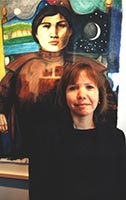“The artwork of others never ceases to astonish me and inspire me. From the pictographs in Peterborough to the Impressionists, the Surrealists and other contemporary art movements. For me, the energy of creation is vivifying. It is at once exalting and conducive to meditation.
During my childhood, I let myself drift off to other worlds while my pencil glided along the paper. My love of drawing has remained strong up until this day.
Recently, I have worked on depicting themes drawing upon my own heritage and culture, whether it is from a social and political standpoint or simply observational works. By going deeper into their meaning, I realise the world and the people I meet are also part of the culture I explore in my work and that they are also a part of me.
AKWÉ:KON TETEWÁ:NEREN (All my relations) is a reflection on these meditations. From the iconography that inspires me up to the concrete process of applying pigments to the canvas or paper, I feel the joy and energy of Creation through my artistic gestures. If, during this process, I can educate people about my culture and heritage, then I think I will have created works of art that go beyond producing something pleasant to look at”.
Ellen Gabriel
More than ten years after the Oka crisis, Ellen Gabriel has reconciled her memories of those events with her artistic research. On the premises of the conflict, through her depiction of the trees in the famous pine forest she has undertaken to bear witness to the deep laceration affecting her and her own people, her Québécois neighbours and wounded nature. Paradoxically, a deep feeling of serenity emanates from the series of four pastels taken from this corpus.
Around a magnificent portrait of her grandmother, the artist invites us into the intimate circle of her own family. Here we are to see, beyond a closed reflection on the problems of art, that Ellen Gabriel has chosen to explore truthfully her people’s heritage, while knowingly putting aside for the purpose of clarity some of the tactics of modernism. It is as if she wanted to have it out with stolen memories once and for all.
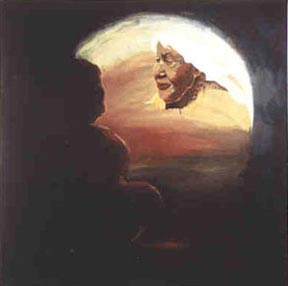
View from sweat lodge
Ellen Gabriel, 1996
Acrylic on canvas, 60 x 72″
In a half-sphere, we can see the illuminated face of a very old woman. In front of her, we catch an impression of round stones.

Tribute to Anna Mae Aquash
Ellen Gabriel
Acrylic on prepared canvas, 48 x 48″
Anna Mae Aquash, the famous Mi’kmaq activist, is portrayed in various ways; with her arms and fist raised in a sign of victory, with a (circumspect) face turned towards the observer and in a full-face portrait. The composition is enhanced by symbols : feathers, quiver, sticks, bird feathers and a starry sky.
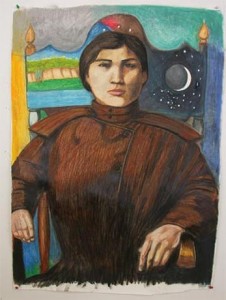
Tota Elizabeth
Ellen Gabriel, 2000
Pastel on paper prepared with plaster, 30 x 42″
Portrait of a woman seated on a chair whose headrest was decorated with a moon and stars on one side, and on the other, a cliff overlooking a river. The young woman wears a dress fashionably at the beginning of the 20th century.
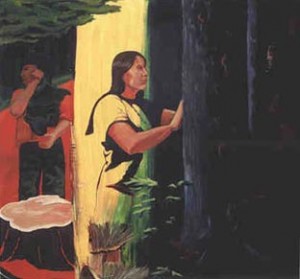
Woman’s duty
Ellen Gabriel, 1998
Acrylic on canvas, 36 x 48″
A woman seems to be caressing a tree while a male figure behind her stands upright in front of the trunk of a felled tree.
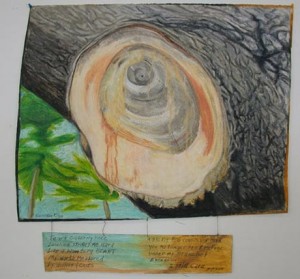
Tree
Ellen Gabriel, 2000
Pastel on paper, 22 x 30″
Close up of a tree with a branch cut off. Its sap looks like tears.
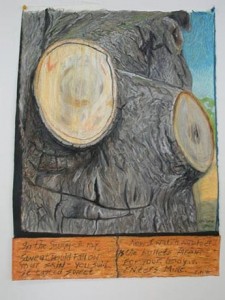
Tree
Ellen Gabriel, 2000
Pastel on paper, 22 x 30″
Close up of a tree with two freshly cut branches.
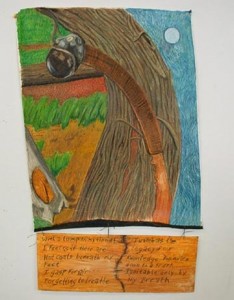
Tree
Ellen Gabriel, 2000
Pastel on paper, 22 x 30″
Composition depicting tree bark, a corner of the sky with a moon and a traditional weapon called a ‘head-smasher’ (bludgeon).
